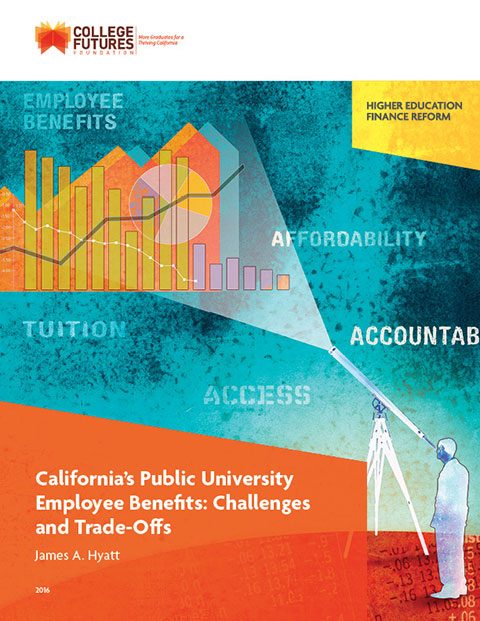The purpose of this policy brief, by James A. Hyatt, is to lay out the dimensions and complex policy components of the issue of employee benefit expenditures in the state’s two public university systems. It also addresses the state and system-level decision-making processes around employee benefits, and provides examples from across the country of emerging strategies to address benefits spending.
California spends more than $375 million annually on pension and health care benefits for the faculty, staff, and other employees of the state’s two university systems, the California State University (CSU) and the University of California (UC).
Between 2008 and 2013, the institutional contributions to those health care and retirement benefits have risen significantly in both systems: overall, as a share of compensation, per employee, and relative to salaries.
California is not alone in witnessing increases in spending on employee benefits—similar patterns are occurring in both public and private non-profit institutions across the country. As is the case in California, spending on benefits is going up even as spending on salaries is flat or declining.
The governor, the legislature, and leaders at both university systems and individual campuses acknowledge many of the challenges—and indeed are acting to address some of them. But the fact remains that many of the university systems’ employee benefit issues remain unresolved or are inadequately understood—and fully addressing them will require candid conversations among diverse stakeholders, and hard choices among difficult trade-offs.
As part of College Futures Foundation’s effort to spur a neutral, analytically grounded discussion about how to pay for increasing access and degree attainment among this generation of California residents, its Higher Education Finance Forum offers this policy brief.
View Resource